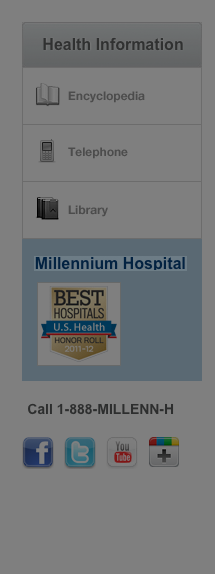Aldosterone - urine; Addison disease - urine aldosterone; Cirrhosis - serum aldosterone
Definition
The 24-hour urinary aldosterone excretion test measures the amount of aldosterone removed in the urine in a day.
Aldosterone can also be measured with a blood test.
How the Test is Performed
A 24-hour urine sample is needed. You will need to collect your urine over 24 hours. Your health care provider will tell you how to do this. Follow instructions exactly.
How to Prepare for the Test
Your provider may ask you to stop taking certain medicines a few days before the test so that they don't affect the test results. Be sure to tell your provider about all the medicines you take. These include:
- High blood pressure medicines
- Heart medicines
- Nonsteroidal anti-inflammatory drugs (NSAIDs)
- Antacid and ulcer medicines
- Water pills (diuretics)
Do not stop taking any medicine before talking to your provider.
Be aware that other factors can affect aldosterone measurements, including:
- Pregnancy
- High- or low-sodium diet
- High- or low-potassium diet
- Eating large amounts of black licorice
- Strenuous exercise
- Stress
Do not drink coffee, tea, or cola during the day the urine is collected. Your provider will likely recommend that you eat no more than 3 grams of salt (sodium) per day for at least 2 weeks before the test.
How the Test will Feel
The test involves only normal urination. There is no discomfort.
Why the Test is Performed
The test is done to see how much aldosterone is released into your urine. Aldosterone is a hormone released by the adrenal gland that helps the kidney control salt, water, and potassium balance.
Normal Results
Results depend on:
- How much sodium is in your diet
- Whether your kidneys work properly
- The condition being diagnosed
Normal value ranges may vary slightly among different laboratories. Some labs use different measurements or test different samples. Talk to your provider about the meaning of your specific test results.
What Abnormal Results Mean
A higher than normal level of aldosterone may be due to:
- Bartter syndrome (group of rare conditions that affect the kidneys)
- Adrenal glands release too much aldosterone hormone (primary hyperaldosteronism) usually due to a benign nodule in the adrenal gland)
- Very low-sodium diet
- Taking blood pressure medicines called mineralocorticoid antagonists
- Abuse of diuretics
- Liver cirrhosis
- Heart failure
- Laxative abuse
Lower than normal levels may indicate Addison disease, a disorder in which the adrenal glands do not produce enough hormones.
Risks
There are no risks with this test.
References
Guber HA, Oprea M, Russell YX. Evaluation of endocrine function. In: McPherson RA, Pincus MR, eds. Henry's Clinical Diagnosis and Management by Laboratory Methods. 24th ed. Philadelphia, PA: Elsevier; 2022:chap 25.
Weiner ID, Wingo CS. Endocrine causes of hypertension: aldosterone. In: Johnson RJ, Floege J, Tonelli M, eds. Comprehensive Clinical Nephrology. 7th ed. Philadelphia, PA: Elsevier; 2024:chap 39.

